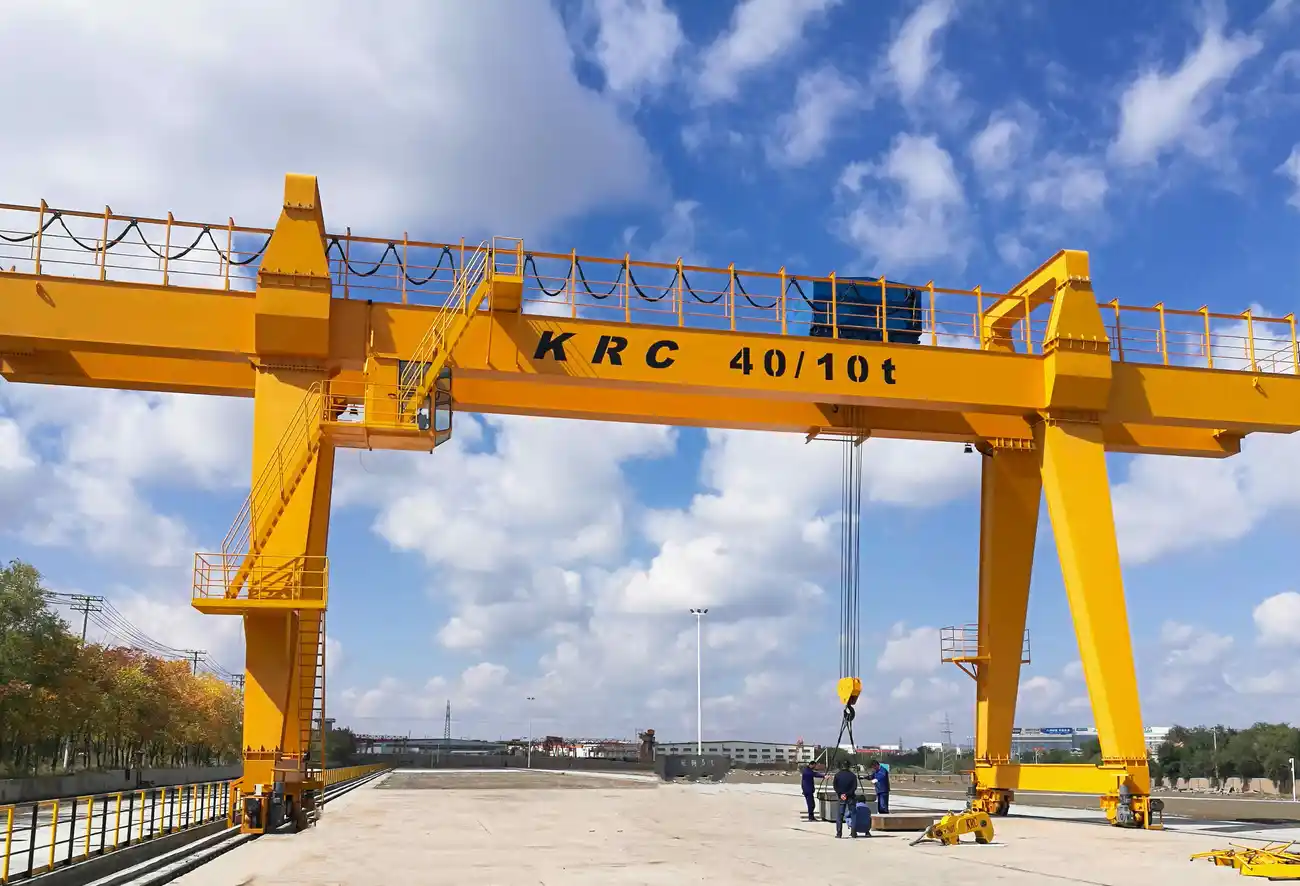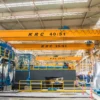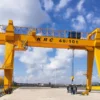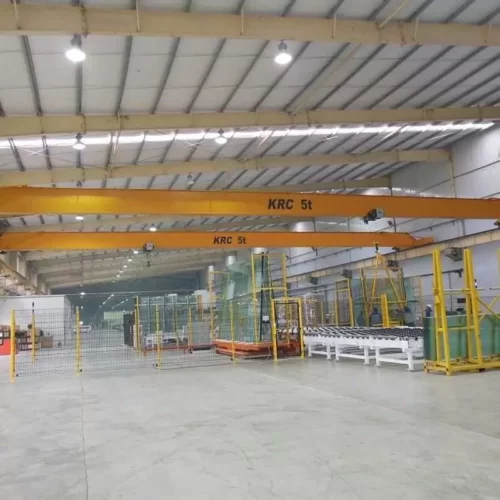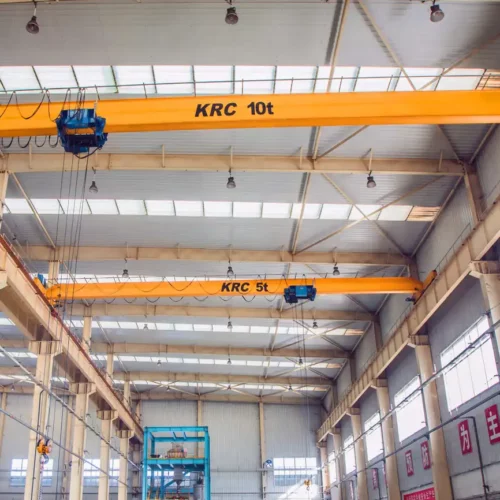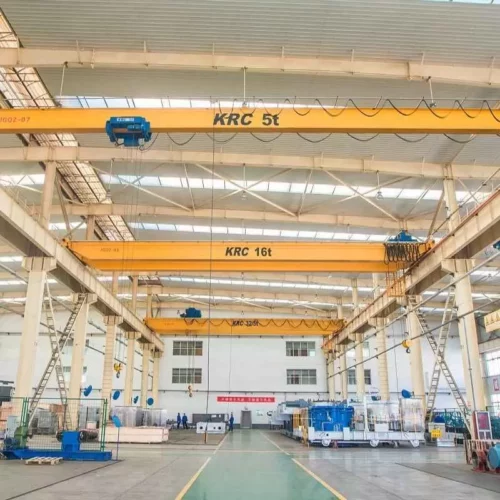10 ton overhead bridge crane Safety Certifications
A 10-ton overhead bridge crane is a substantial piece of equipment used in various industrial settings for lifting heavy loads. Its operation requires stringent safety measures to ensure both the safety of the operators and the integrity of the machinery. Various safety certifications and standards must be adhered to for its safe operation.
1. OSHA Compliance: The Occupational Safety and Health Administration (OSHA) has specific regulations (29 CFR 1910.179) that cover the design, maintenance, and operation of overhead and gantry cranes. Compliance with these regulations is mandatory in the United States.
2. ASME B30 Standards: The American Society of Mechanical Engineers (ASME) B30 series, especially B30.2 for overhead and gantry cranes, outlines safety practices for the construction, inspection, maintenance, and operation of cranes.
3. CMAA Specifications: The Crane Manufacturers Association of America (CMAA) provides guidelines through CMAA Specification #70, which details the construction and operation standards for overhead traveling cranes.
4. ANSI/ASME Certification: Ensuring that the crane meets the provisions of the American National Standards Institute (ANSI) and ASME for mechanical and operational safety.
5. ISO 9001: Certification under ISO 9001 can ensure that the manufacturer adheres to global quality management standards, which indirectly influences the safety and reliability of the crane.
6. CE Marking (for Europe): For cranes used within the European Economic Area (EEA), CE marking indicates conformity with health, safety, and environmental protection standards for products sold within Europe.
7. Inspection and Testing: Regular inspection and testing in line with OSHA requirements and manufacturer guidelines, usually by certified professionals, ensure continued compliance and operational safety.
8. Training Certifications: Operators should be certified and trained according to the standards set by organizations like the National Commission for the Certification of Crane Operators (NCCCO).
Adhering to these certifications and standards ensures that a 10-ton overhead bridge crane is safe to operate, minimizing the risk of accidents and inefficiencies in the workplace.
List Reference Technical Parameters of “10 ton overhead bridge crane”
A “10-ton overhead bridge crane” is a type of industrial crane that allows for the horizontal movement of heavy materials within a confined space, such as a warehouse or a manufacturing facility. Below are some reference technical parameters typically associated with this type of crane:
1. Load Capacity:
– Maximum Lifting Capacity: 10 tons (20,000 pounds).
2. Span Length:
– The distance between the runways, usually ranging from 20 to 100 feet, depending on the specific application and facility requirements.
3. Lifting Height:
– The maximum vertical distance the hook can travel, typically between 10 to 30 feet.
4. Trolley Speed:
– Horizontal movement speed of the trolley, usually ranging between 60 to 200 feet per minute (fpm).
5. Bridge Speed:
– The speed at which the bridge moves, typically between 100 to 250 feet per minute.
6. Hoist Speed:
– The vertical lifting speed of the hoist, typically ranging from 10 to 50 feet per minute.
7. Control System:
– Options include pendant control, wireless remote control, or a combination of both.
– Variable frequency drives (VFD) for smooth acceleration and deceleration.
8. Braking System:
– Electrical and mechanical braking systems used for safety and precision in load control.
9. Power Supply:
– Electrification system, usually three-phase AC power supply, 380V/50Hz or 460V/60Hz, depending on the region.
10. Duty Cycle:
– Classification based on usage, ranging from light duty (Class A) to heavy-duty (Class E or F).
11. Safety Features:
– Load limit switches, emergency stop buttons, anti-collision systems, and overload protection mechanisms.
12. Structure:
– Single or double girder bridge designs.
– Materials often include high-tensile steel and sometimes aluminum components for specific applications.
13. Environmental Conditions:
– Designed to operate in temperatures ranging from -20°C to 40°C, with special designs for extreme conditions.
These parameters offer a comprehensive overview of what to expect from a 10-ton overhead bridge crane, ensuring suitability for various industrial and commercial applications.
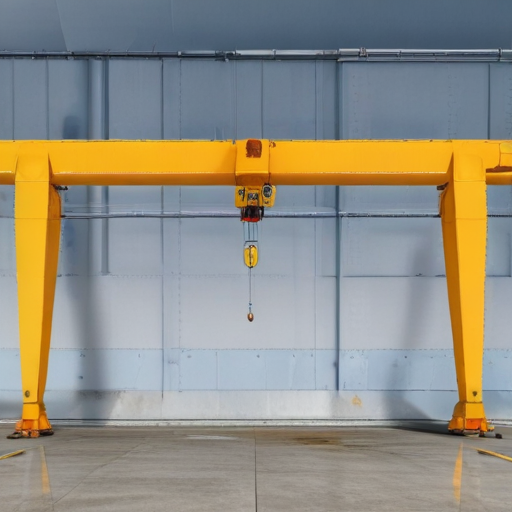
List Product features of “10 ton overhead bridge crane”
Sure! Here are the key features of a “10-ton overhead bridge crane”:
1. Load Capacity: Capable of lifting and moving loads up to 10 tons (20,000 lbs), suited for heavy industrial applications.
2. Bridge Construction: Comprises a sturdy bridge girder (or girders) that span the width of the work area. Typically constructed from high-quality steel for maximum strength and durability.
3. Runway System: Travels on a fixed runway system, either single or double girder, which provides smooth and consistent movement across the work area.
4. Hoist Mechanism: Equipped with a robust electric hoist that allows for precise vertical lifting and lowering of loads. Often includes features like multiple lifting speeds and overload protection.
5. Trolley System: The hoist is mounted on a trolley that moves horizontally along the bridge girder, enabling efficient load positioning.
6. Electrification: Includes a power supply system, often festoon or conductor bars, that provides reliable electricity to the crane components.
7. Control Options: Comes with various control methods such as pendant controls, radio remote controls, and cabin controls for operator comfort and safety.
8. Safety Features: Integrated with various safety mechanisms such as limit switches, emergency stop buttons, overload sensors, and anti-collision systems to ensure safe operation.
9. Customization: Often customizable to fit specific industry requirements, including different spans, lifting heights, speeds, and additional features like walkways or maintenance platforms.
10. Regulatory Compliance: Designed in accordance with industry standards and regulations, ensuring safe and reliable performance in accordance with OSHA, ANSI, and other relevant bodies.
11. Durability and Maintenance: Built for long service life with easy maintenance features like accessible components, grease fittings, and diagnostic systems to minimize downtime.
12. Applications: Ideal for a variety of industrial sectors such as manufacturing, construction, warehousing, and steel mills, where the efficient and safe handling of large, heavy items is critical.
These features make a 10-ton overhead bridge crane a versatile and essential tool in many heavy-duty material handling environments.
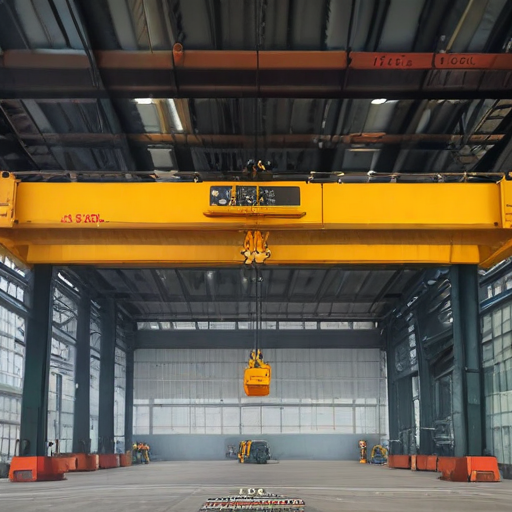
List Various Types of “10 ton overhead bridge crane”
Certainly! Here are various types of 10-ton overhead bridge cranes:
1. Single Girder Overhead Crane:
– A single girder crane has one main bridge girder supported by end trucks. It’s simpler and more cost-effective, suitable for light to moderate lifting needs.
2. Double Girder Overhead Crane:
– This crane type features two main bridge girders and is more robust, offering greater height of lift and higher speed. It is ideal for heavier and more frequent lifting.
3. Top Running Crane:
– The crane’s end trucks ride on rails mounted on the top of the crane runway beams. Top running cranes are used for heavy-duty applications and can accommodate higher capacities and larger spans.
4. Under Running (Underslung) Crane:
– This crane type suspends from the ceiling structure, running on the bottom flange of runway beams. It is preferred in facilities with low headroom.
5. Electric Overhead Traveling (EOT) Crane:
– EOT cranes are powered electrically and can be controlled via a cab operator, pendant controls, or remote controls. They are highly versatile and widely used in various industries.
6. Manual Overhead Crane:
– Operated manually, these are typically used in smaller, slower-paced workshops where electric cranes would be unnecessary overkill.
7. Explosion-Proof Crane:
– Designed for hazardous environments, these cranes are built to prevent sparks or heat that could ignite flammable substances.
8. Magnetic Crane:
– These cranes are equipped with electro-magnets for handling magnetic materials like steel and iron. They are widely used in metalworking industries.
9. Gantry Crane:
– Although similar to overhead cranes, gantry cranes have their own legs and can be mounted on rails or wheels. They are ideal for outdoor applications or where existing building structure cannot support overhead cranes.
10. Industrial Workstation Crane:
– These cranes offer ergonomic lifting solutions and are typically used for lighter loads in smaller areas. They can be easily integrated into production lines.
Each type is designed to meet specific operational needs based on factors like load capacity, working environment, and structural constraints.
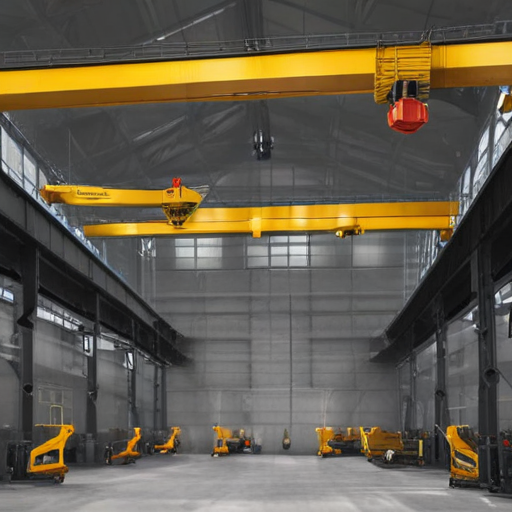
List Application of “10 ton overhead bridge crane”
A 10-ton overhead bridge crane is a critical piece of equipment used in various industries due to its ability to lift and move heavy loads with precision and safety. Here are some key applications:
1. Manufacturing Plants: Used for assembling heavy machinery, moving raw materials, and placing components on production lines.
2. Steel Mills: Essential for handling heavy steel beams, coils, and plates, which are integral parts of steel production and processing.
3. Warehousing and Distribution: Facilitates efficient loading and unloading of bulky goods, enhancing logistics operations.
4. Shipbuilding: Assists in moving large ship components, engines, and materials, streamlining the construction process.
5. Construction Sites: Aids in lifting heavy construction materials like concrete blocks, steel frames, and equipment, ensuring timely project completion.
6. Automotive Industry: Employed in lifting engines, chassis, and other large automobile parts during assembly and maintenance.
7. Power Plants: Used to handle heavy components such as turbines, generators, and transformers crucial for plant operations.
8. Aerospace Industry: Vital for lifting large aircraft parts and assemblies, ensuring precise construction and maintenance.
9. Railroad Maintenance: Enables the lifting and positioning of heavy railway components, tracks, and locomotives for repair and installation.
10. Recycling Plants: Helps in managing heavy recycled materials and scrap, facilitating efficient material handling and processing.
Each application emphasizes the crane’s ability to improve operational efficiency, safety, and precision in handling heavy loads, making it indispensable across a wide array of sectors.
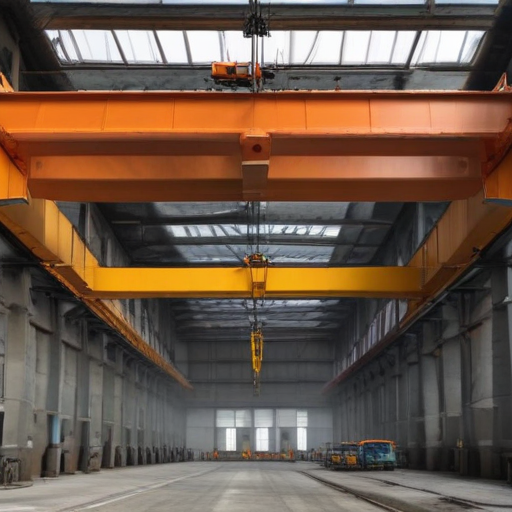
List Buyer Types of “10 ton overhead bridge crane”
When considering the buyer types for a 10-ton overhead bridge crane, several industry sectors and specific use-cases emerge. These cranes are essential for applications that demand heavy lifting, precise maneuvering, and efficiency in material handling. Here is a concise overview of potential buyers:
1. Manufacturing Plants:
– Automotive Industry: Used for lifting and positioning vehicle parts and assemblies.
– Metal Fabrication: Required for handling heavy metal plates, beams, and fabricated structures.
– Machinery and Equipment Manufacturing: Employed in the assembly of heavy machinery components.
2. Warehousing and Logistics:
– Distribution Centers: Facilitate the movement of heavy goods and materials within large warehouses.
– Freight Terminals: Assist in loading and unloading heavy cargo from trucks or storage areas.
3. Construction Companies:
– Precast Concrete and Construction Materials: Utilized for handling bulky construction materials like precast concrete segments and steel reinforcements.
– Infrastructure Projects: Essential for bridge construction, highway development, and other large-scale construction projects.
4. Mining and Mineral Processing:
– Mining Operations: Used for moving raw minerals, maintenance of heavy machinery, and processing equipment.
– Smelting and Refining Facilities: Assist in handling molten metals, ores, and other heavy materials.
5. Energy Sector:
– Power Plants: Facilitate the handling of heavy equipment and maintenance of power plant components.
– Renewable Energy Projects: Used for lifting heavy parts of wind turbines, solar panels, and other renewable energy installations.
6. Shipbuilding and Marine Industries:
– Shipyards: Essential for lifting and positioning large ship sections, engines, and equipment.
– Ports and Docks: Used for cargo handling and maintenance of maritime vessels.
7. Aerospace Industry:
– Aircraft Manufacturing and Maintenance: Required for the precise assembly and maintenance of aircraft components.
Each buyer type has unique requirements and considerations, making the selection of a 10-ton overhead bridge crane a critical investment to enhance operational efficiency and safety.
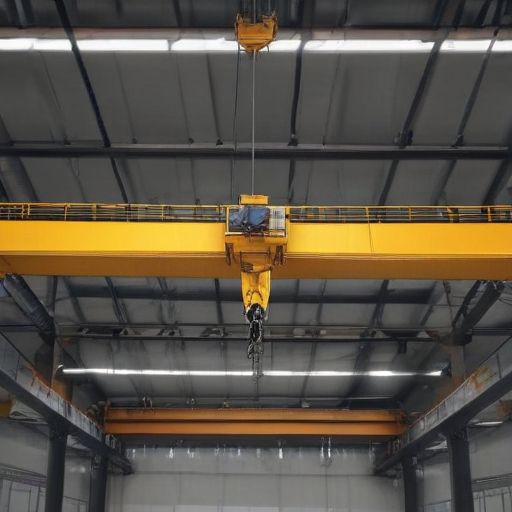
List “10 ton overhead bridge crane” Project Types for Different Industries
Certainly! Below is a list of project types involving 10-ton overhead bridge cranes across various industries:
1. Manufacturing Plants:
– Assembly line lifting: Transporting large components between different stages of production.
– Material storage: Moving raw materials and finished products within warehouses.
2. Steel and Metal Fabrication:
– Sheet metal handling: Lifting heavy sheets onto cutting and shaping machines.
– Structural steel assembly: Positioning beams and girders for welding and assembly.
3. Automotive Industry:
– Engine and transmission lifting: Installing heavy components onto vehicles.
– Die and mold handling: Transporting large, heavy molds for manufacturing parts.
4. Aerospace Industry:
– Aircraft assembly: Moving large parts like wings and fuselages into place.
– Maintenance operations: Hoisting heavy equipment during inspections and repairs.
5. Construction Sites:
– Precast concrete: Handling and positioning concrete beams and panels.
– Heavy equipment maintenance: Lifting large machinery for servicing.
6. Hydroelectric Power Plants:
– Turbine installation: Positioning and installing heavy turbines.
– Equipment maintenance: Lifting large components for repairs and upkeep.
7. Shipbuilding Yards:
– Hull assembly: Moving heavy steel sections during ship construction.
– Engine installation: Lifting propulsion systems into place in ship engine rooms.
8. Railway Workshops:
– Locomotive maintenance: Hoisting engines and carriages for inspections.
– Track component handling: Lifting rails and other heavy components during track assembly.
9. Mining Operations:
– Ore processing: Hoisting heavy equipment for milling and crushing operations.
– Maintenance: Lifting large machinery for repair and servicing.
10. Paper and Pulp Industry:
– Roll handling: Lifting heavy paper rolls for production and storage.
– Machinery maintenance: Transporting large machinery components for repairs.
Each of these project types showcases the versatility and necessity of 10-ton overhead bridge cranes in handling heavy loads effectively and safely across diverse industrial settings.
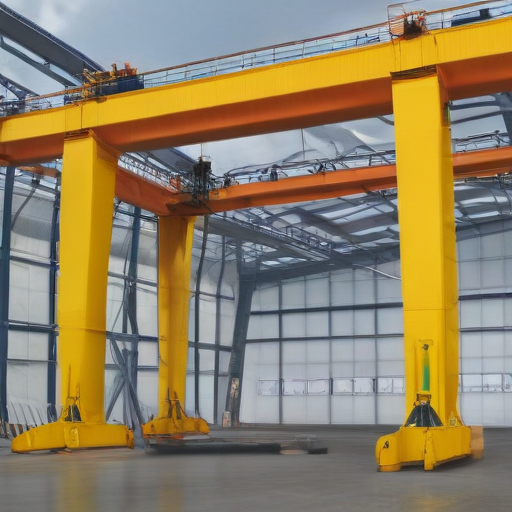
10 ton overhead bridge crane Accessories Upgrades and Custom Manufacturing Options
Enhancing the functionality and efficiency of a 10-ton overhead bridge crane can be achieved through various accessories, upgrades, and custom manufacturing options. Below are key enhancements:
1. Hoist Upgrades:
– Variable Frequency Drives (VFD): Provides smoother operation and precise control of lifting speeds.
– Precision Hoists: Ensure accurate positioning and maintaining load stability.
2. Control Systems:
– Radio Remote Controls: Offer increased mobility and safety for the operator.
– Pendant Controls with Ergonomic Design: Enhance operator comfort and reduce fatigue.
– Automated Control Systems: Enable semi or full automation for repetitive lifts.
3. Safety Enhancements:
– Anti-collision Systems: Reduce the risk of crane-to-crane collisions in multi-crane operations.
– Load Weighing Systems: Instantly display load weights to avoid overloading.
– Limit Switches: Automatically stop the hoist when loads reach maximum desired height.
4. Mechanical Upgrades:
– Rotating Hooks: Facilitate easier maneuvering and positioning of loads.
– Load Positioning Systems: Utilize sensors to ensure precise load placement.
– Anti-sway Technology: Minimized swaying to enhance safety and efficiency.
5. Environmental Adaptations:
– Explosion-proof Features: Essential for operations in hazardous environments.
– Corrosion-resistant Coatings: Increase crane lifespan in corrosive environments.
– Weatherproofing: Ensure reliable operation in outdoor settings.
6. Custom Manufacturing Options:
– Custom Span and Lift Heights: Tailored to specific operational requirements.
– Advanced Materials: Utilize lightweight yet strong materials for reduced wear and improved performance.
– Specialized Lifting Attachments: Custom hooks, magnets, or grabs designed for unique load types.
Incorporating these upgrades and custom options can maximize the operational efficiency, safety, and longevity of your 10-ton overhead bridge crane, ensuring it meets your specialized lifting needs.
List Quality Control and The Manufacturing Process of “10 ton overhead bridge crane”
Quality Control in 10 Ton Overhead Bridge Crane Manufacturing
1. Material Inspection: Raw materials are inspected for defects and compliance with specifications, ensuring structural integrity.
2. Welding Quality: Welds are tested using methods like ultrasonic or X-ray inspection to ensure they meet strength and durability standards.
3. Component Testing: All components such as motors, gearboxes, and electrical systems are subjected to performance and safety tests before assembly.
4. Load Testing: Each crane undergoes load testing to verify its capability to handle the rated load of 10 tons without deformation or failure.
5. Dimensional Verification: Components are measured to ensure they adhere to design drawings and specifications, maintaining precise alignment and fit.
6. Failure Analysis: Any anomalies detected during testing are analyzed. Root cause analysis is performed, and corrective actions are implemented.
7. Documentation and Compliance: Detailed records of inspections, tests, and quality assurance processes ensure traceability and compliance with industry standards and regulations.
Manufacturing Process of 10 Ton Overhead Bridge Crane
1. Design and Engineering:
– Initial concepts and designs are developed using CAD software.
– Structural calculations are performed to verify strength and safety.
– All design elements must meet industry standards and client requirements.
2. Material Sourcing:
– High-grade steel and other required materials are sourced according to specifications.
– Components like motors, wiring, and controls are procured from reputable suppliers.
3. Fabrication:
– Steel components are cut, shaped, and welded according to design specifications.
– Precision machining is performed on critical parts to ensure accuracy.
4. Assembly:
– Major components like the bridge, end trucks, hoist, and trolley are assembled.
– Electrical systems and controls are integrated.
5. Welding and Finishing:
– High-quality welding is performed, followed by surface treatment such as painting or galvanizing to prevent corrosion.
6. Inspection and Testing:
– Comprehensive inspections are conducted throughout the manufacturing process.
– Load testing, functional testing, and safety testing are performed.
7. Documentation and Shipping:
– Detailed documentation including operation manuals, safety guidelines, and compliance certificates are prepared.
– The crane is carefully packed and shipped to the installation site.
This structured approach ensures the high-quality production of 10-ton overhead bridge cranes, maximizing safety, reliability, and performance.
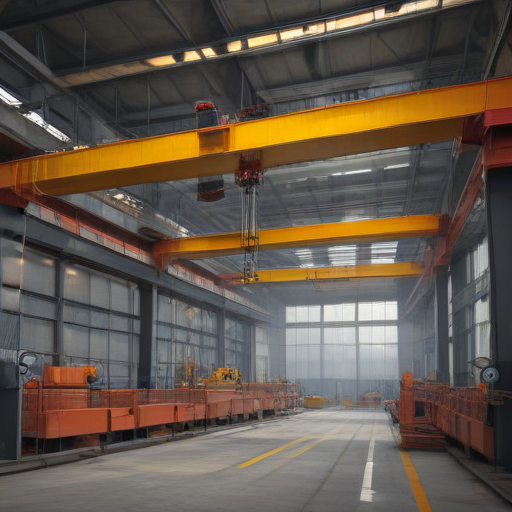
How to use “10 ton overhead bridge crane”
Using a 10-ton overhead bridge crane involves several key steps to ensure safe and efficient operation:
1. Pre-Operational Checks:
– Inspect the crane for any visible damage or wear.
– Check the load capacity and ensure it matches the weight of your load.
– Verify that all controls and emergency stops are functioning properly.
2. Lift Planning:
– Determine the weight of the load to ensure it doesn’t exceed the crane’s capacity.
– Plan the lifting path to avoid obstructions.
– Ensure the area is clear of unauthorized personnel.
3. Rigging the Load:
– Use appropriate lifting slings or chains rated for the load’s weight.
– Ensure the load is balanced and securely attached.
– Double-check all rigging connections.
4. Operating the Crane:
– Use the control pendant or radio remote to move the crane carefully.
– Slowly lift the load a few inches to test balance and stability.
– Gradually lift the load to the required height, keeping it steady.
5. Moving the Load:
– Move the crane in short, controlled motions to avoid swinging.
– Use smooth and steady movements to transport the load to the desired location.
– Monitor the load and surroundings continuously.
6. Lowering the Load:
– Slowly lower the load to its destination.
– Ensure it is placed securely and safely.
– Unhook the rigging once the load is stable.
7. Post-Operational Checks:
– Park the crane safely and turn off the power.
– Inspect the crane and rigging for any issues.
– Report any abnormalities to the maintenance team.
Always follow the specific operating manual for your crane model and adhere to safety regulations and guidelines. Proper training and certification are essential for crane operators.
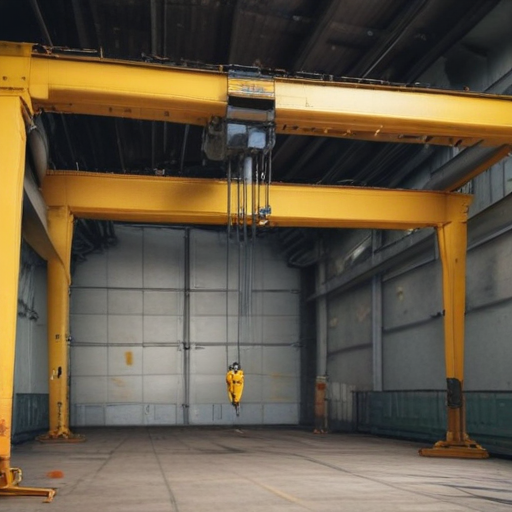
“10 ton overhead bridge crane” Comparative Analysis
A 10-ton overhead bridge crane is a versatile lifting device utilized across various industries, including manufacturing, warehousing, and construction. A comparative analysis of this type of crane involves examining key aspects such as design, functionality, operation, and cost.
Design and Construction:
Overhead bridge cranes can be single girder or double girder. Single girder cranes feature one main beam and are generally more cost-effective, simpler to install, and suitable for lighter tasks. In contrast, double girder cranes have two main beams, offering greater strength and higher lifting capacity, though they are more expensive and complex to install.
Functionality:
Both configurations typically employ an electric hoist for vertical lifting and may include a trolley for horizontal movement. Double girder cranes can facilitate greater hook height, enabling taller lifts, and are more apt for applications requiring extensive horizontal movement.
Operation:
Control options include pendant controls, remote controls, and automated systems. Remote controls enhance safety and flexibility, allowing operators to maneuver loads from a distance, thereby mitigating potential hazards. Automated systems offer precision and efficiency but at a higher cost and with potential complexities in integration.
Cost:
Single girder cranes are generally less expensive, with lower initial investment and maintenance costs. They are optimal for facilities with lighter usage or where budget constraints are significant. In contrast, double girder cranes, while more expensive, deliver superior performance for high-intensity operations and can handle more substantial loads and broader spans.
Performance and Application:
Single girder cranes are ideal for low to moderate workflow environments, whereas double girder cranes are indispensable in heavy-duty applications like steel manufacturing, large-scale assembly lines, or massive warehousing operations.
In conclusion, choosing between a single or double girder 10-ton overhead bridge crane hinges on specific needs such as lifting height, workspace dimensions, frequency of use, and budget. Evaluating these factors ensures optimal investment and operational efficiency.
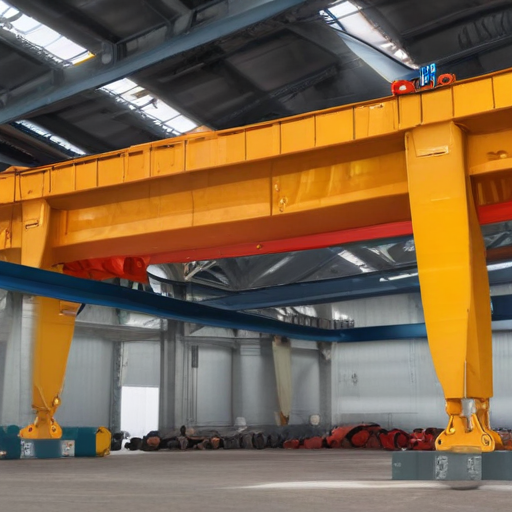
“10 ton overhead bridge crane” Warranty and Support
Warranty and Support for 10 Ton Overhead Bridge Crane
#### Warranty:
Our 10-ton overhead bridge crane comes with a comprehensive warranty to ensure a worry-free investment. The standard warranty period is 24 months from the date of installation or 30 months from the date of shipment, whichever comes first. This warranty covers defects in materials and workmanship under normal use.
Key Warranty Inclusions:
– Structural Components: Warranty against manufacturing defects or premature failure in beams, end trucks, runways, and trolleys.
– Mechanical Components: Coverage for hoists, hooks, and gears against defects.
– Electrical Components: Protection for motors, control systems, and wiring.
Exclusions:
– Normal wear and tear
– Misuse, neglect, or unauthorized modifications
– Routine maintenance items
For the warranty to be valid, all maintenance and inspections must be performed according to the manufacturer’s guidelines, and any repairs must be done by authorized service technicians.
#### Support:
Our support services are designed to keep your crane operational with minimal downtime. We offer:
1. 24/7 Customer Support: Dedicated helpline and email support for troubleshooting and technical assistance.
2. On-Site Service: Skilled technicians available for on-site diagnosis, repair, and routine maintenance.
3. Spare Parts Availability: Fast-track access to genuine spare parts to minimize downtime.
4. Training Programs: Comprehensive operator and maintenance training sessions to ensure safe and efficient crane operation.
5. Extended Service Plans: Optional service contracts that include regular preventive maintenance and periodic inspections to extend the life of your crane.
Your satisfaction is our priority. We are committed to providing top-tier warranty and support services to ensure the optimal performance and longevity of your 10-ton overhead bridge crane.
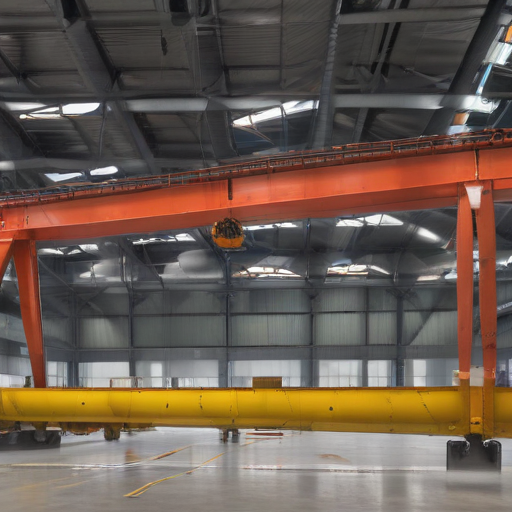
List “10 ton overhead bridge crane” FAQ
10 Ton Overhead Bridge Crane FAQ
1. What is a 10 ton overhead bridge crane?
– A 10 ton overhead bridge crane is a type of crane that can lift and transport loads up to 10 tons across a fixed path, typically installed in industrial settings such as warehouses or manufacturing plants.
2. What are the main components of a 10 ton overhead bridge crane?
– Key components include the bridge girder, hoist, trolley, runway beam, end trucks, and control systems.
3. Can the crane be used outdoors?
– Yes, but outdoor use may require weatherproofing and special maintenance to protect against the elements.
4. How high can a 10 ton crane lift?
– The lift height varies based on the design, but typically ranges from 10 to 30 feet or even higher if customized.
5. What are the power requirements?
– Most cranes operate on 3-phase electrical power, commonly at 220V, 440V, or 480V, but requirements can vary by model and manufacturer.
6. Is it possible to customize the crane?
– Yes, cranes can be tailored to specific requirements, including lifting height, span, speed, and control options.
7. What safety features are included?
– Safety features often include overload protection, emergency stop buttons, limit switches, and audible alarms.
8. How often should the crane be inspected and maintained?
– Regular inspections are essential, typically on a daily, monthly, and annual basis, depending on usage intensity and regulatory requirements.
9. What types of controls are available?
– Common controls include pendant controls, wireless remote controls, and cab controls, allowing for versatile and safe operation.
10. How long does installation take?
– Installation duration depends on the crane’s complexity and site conditions, but generally ranges from a few days to several weeks.
By addressing these common questions, you gain a better understanding of the qualities and requirements of a 10 ton overhead bridge crane, ensuring safer and more efficient operations.
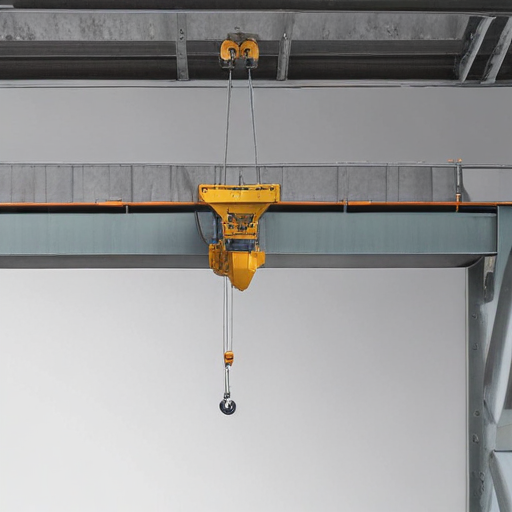
Top 10 FAQ with answer about 10 ton overhead bridge crane for Buyer Sourcing from China
Sure, here are the top 10 frequently asked questions (FAQ) about sourcing a 10-ton overhead bridge crane from China, with concise answers:
1. What is the cost of a 10-ton overhead bridge crane from China?
The cost can vary widely based on specifications, features, and the manufacturer. Expect prices between $10,000 to $50,000. Request detailed quotes from multiple suppliers for accurate pricing.
2. What are the key specifications I should look for?
Important specifications include load capacity (10 tons), span length, lifting height, duty cycle, crane speed, and hoist speed. Ensure these match your operational requirements.
3. How do I ensure the quality of the crane?
Verify the manufacturer’s certifications (ISO, CE), request references, check previous customer reviews, and consider third-party inspections.
4. What is the typical lead time for manufacturing and delivery?
Lead time ranges from 4 to 12 weeks depending on customization and factory schedules. Confirm with the supplier to align with your project timeline.
5. What are the payment terms typically offered?
Common terms include 30% deposit upon order and 70% before shipment. Some suppliers may offer terms like L/C (Letter of Credit) based on negotiation.
6. How is shipping and logistics handled?
Most suppliers offer FOB (Free On Board) terms. You will need to arrange shipping from the Chinese port to your location. DDP (Delivered Duty Paid) might be available at additional cost.
7. What after-sales support and warranty are provided?
Warranties generally cover 1-2 years. Support includes spare part supply, technical assistance, and sometimes on-site maintenance. Clarify this in the purchasing agreement.
8. Are spare parts readily available and what is their cost?
Confirm spare part availability with the supplier, including common parts like hoist motors, brakes, and controllers. Obtain a price list to estimate maintenance costs.
9. How do I ensure compliance with local regulations?
Verify that the crane conforms to local safety standards and regulations. You may need to obtain certifications or inspections upon arrival.
10. What are the installation and commissioning requirements?
Installation may require specialized skills. Some suppliers offer installation services or can recommend local partners. Ensure your team has the necessary training and tools.
Always conduct thorough due diligence when sourcing from international suppliers to mitigate risks and ensure a smooth procurement process.

